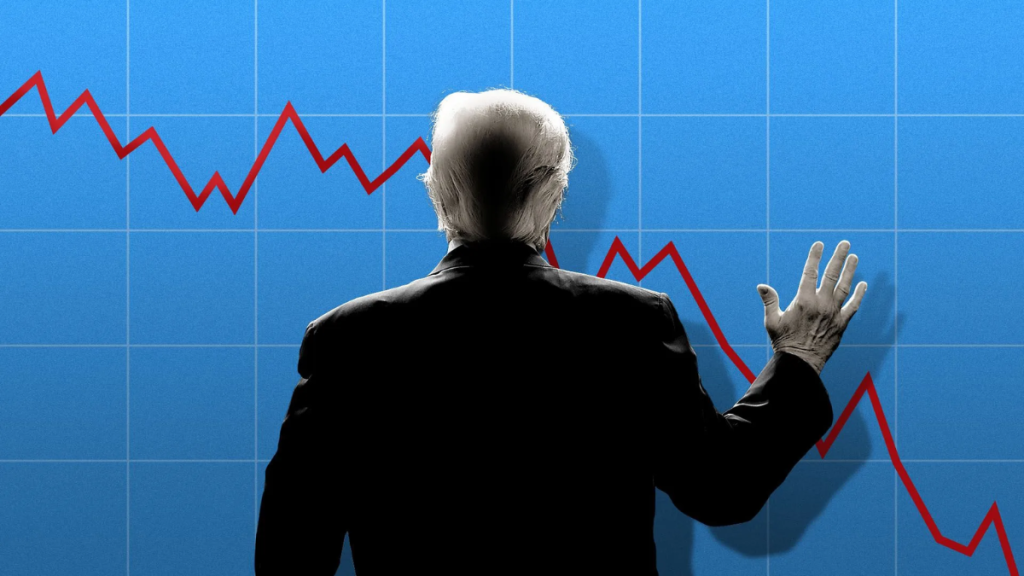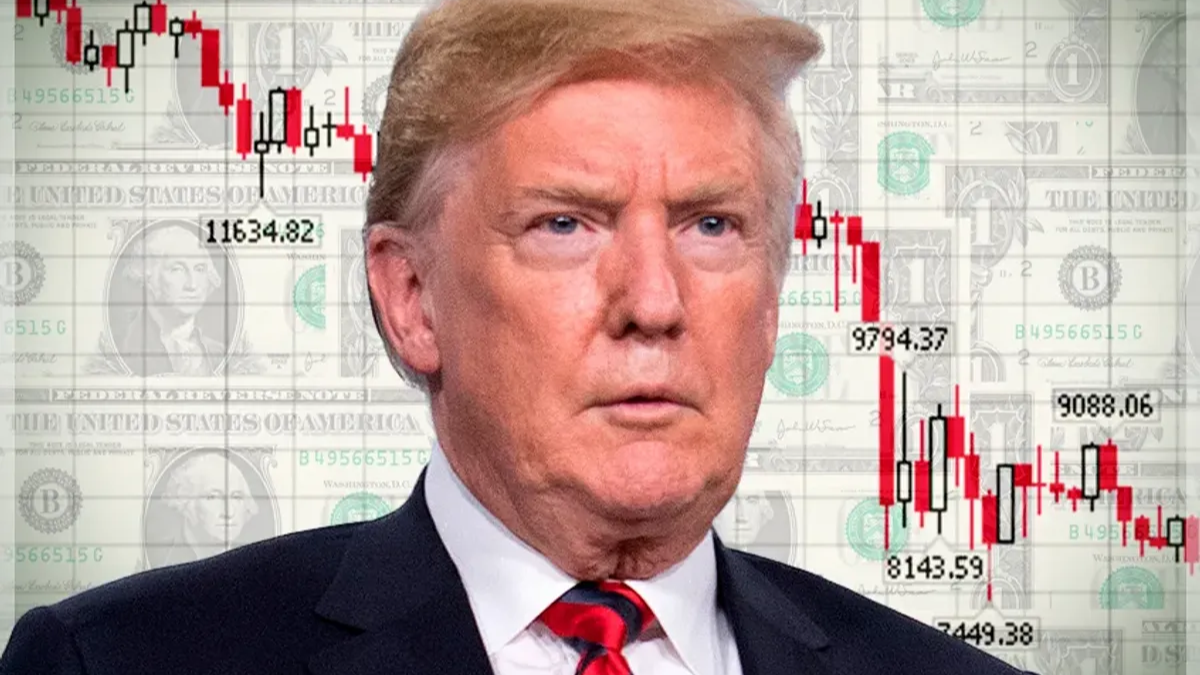The United States has long been considered a symbol of economic strength, innovation, and resilience. From post-war industrial dominance to the tech boom of the 21st century, the country has weathered global downturns and emerged as a leader of free-market capitalism.
However, recent trends suggest that this “American economic miracle” is now under significant strain. Much of the blame, economists argue, stems from the economic policies implemented during Donald Trump’s presidency and carried forward by political allies.
From aggressive protectionist trade policies to labor-disrupting immigration restrictions and political interference with monetary institutions, the legacy of Trump’s economic direction has upended decades of growth strategies.
While some of these measures were framed as efforts to “Make America Great Again,” many experts now view them as having a detrimental impact on U.S. competitiveness, market stability, and global leadership.
Escalating Trade Deficits Amid Tariff Wars
A central part of Trump’s economic agenda was reshaping the U.S. trade landscape through punitive tariffs, primarily aimed at China. These were intended to reduce the trade deficit and reshore American manufacturing. However, the results have not matched the rhetoric.
In 2024, the U.S. trade deficit soared to $918.4 billion, up 17% from the previous year, according to the U.S. Bureau of Economic Analysis. The goods trade deficit alone hit a record-breaking $1.2 trillion, highlighting the shortcomings of protectionist policies.
While tariffs did restrict some imports, they simultaneously increased the cost of goods for American businesses and consumers and sparked retaliatory actions from trading partners.
One of the most extreme policies included a 145% tariff on Chinese imports, alongside increased tariffs on goods from Mexico and Canada—America’s closest trading partners. In response, China imposed a 125% retaliatory tariff on U.S. products, severely affecting American farmers and manufacturers who rely on exports.
Economists note that these tit-for-tat measures disrupted supply chains and made essential materials more expensive, hurting the very industries the tariffs were designed to protect.
Consumer Sentiment and Inflation Concerns
The consequences of these trade conflicts are evident not only in data sheets but also in everyday American life. In April 2025, the University of Michigan’s consumer sentiment index fell by 11%, landing at a concerning 50.8.
This marks one of the lowest levels in the last decade and reflects the growing anxiety among consumers over job security, inflation, and long-term financial stability.
At the same time, inflation expectations have surged to 4.4%, placing additional pressure on the Federal Reserve to control rising prices while maintaining economic growth. The increase in costs for goods—especially imported products like electronics, auto parts, and raw materials—has directly impacted middle- and working-class families.
While inflation was once seen as a pandemic-era anomaly, it has proven to be more persistent, in part due to lingering tariffs and disrupted global trade relations.

Impact on Manufacturing and the American Heartland
The American Midwest and rural heartland, regions that historically fueled Trump’s electoral support, are now facing some of the harshest economic fallout.
These areas had experienced a modest resurgence in recent years thanks to remote work migration and federal infrastructure investment. However, new tariffs have reversed some of that progress.
With production costs rising due to inflated prices on foreign materials, manufacturers in states like Ohio, Michigan, and Pennsylvania are seeing reduced profit margins and shrinking workforces.
In agriculture-heavy states such as Iowa and Nebraska, retaliatory tariffs from countries like China and India have slashed export demand for corn, soybeans, and pork.
Moreover, Trump’s restrictive immigration policies have resulted in severe labor shortages, especially in sectors like agriculture, construction, and food services. Many of these industries rely heavily on seasonal and migrant labor to function efficiently.
The lack of workers has stalled development projects, increased production times, and driven up wages in ways that aren’t sustainable for small businesses.
Warnings from Financial Leaders
The financial world has not remained silent on these developments. JPMorgan Chase CEO Jamie Dimon recently warned investors of “considerable turbulence” ahead. He cited not just geopolitical instability but also internal economic mismanagement, inflation, and the continued threat of isolationist trade policies as reasons for concern.
Although corporate tax cuts and deregulation during the Trump years initially boosted business profits and stock market performance, they also contributed to long-term federal deficits and a widening wealth gap. The temporary benefits are now giving way to long-term instability.
A Declining Global Economic Position
Some analysts have gone so far as to compare America’s current economic drift to the 1956 Suez Crisis, which symbolized Britain’s waning influence on the global stage. Similarly, the U.S.’s unilateral economic decisions and disregard for multilateral partnerships have cast doubt on its reliability as a global economic leader.
Data from the World Bank and International Monetary Fund indicate that other countries, including China and members of the European Union, are stepping into leadership roles in trade and innovation that the U.S. once dominated.
America’s average tariff level is now the highest it’s been in nearly a century, and that protectionist stance is deterring international investment and slowing innovation.
Conclusion
The Trump-era economic policies—once hailed by supporters as bold and necessary reforms—have proven to be destabilizing forces that have undercut the very foundation of American prosperity.
With ballooning trade deficits, increased consumer anxiety, inflated prices, and strained global partnerships, the so-called economic miracle has been severely compromised.
As the nation looks toward the 2026 midterms and beyond, policymakers must confront the reality of these failed experiments.
Restoring America’s economic resilience will require a return to multilateral cooperation, sensible immigration reform, and trade policies grounded in global competitiveness rather than isolationist fantasy.
For in-depth statistics on U.S. trade and economic performance, visit the U.S. Bureau of Economic Analysis.
Disclaimer – Our team has carefully fact-checked this article to make sure it’s accurate and free from any misinformation. We’re dedicated to keeping our content honest and reliable for our readers.
